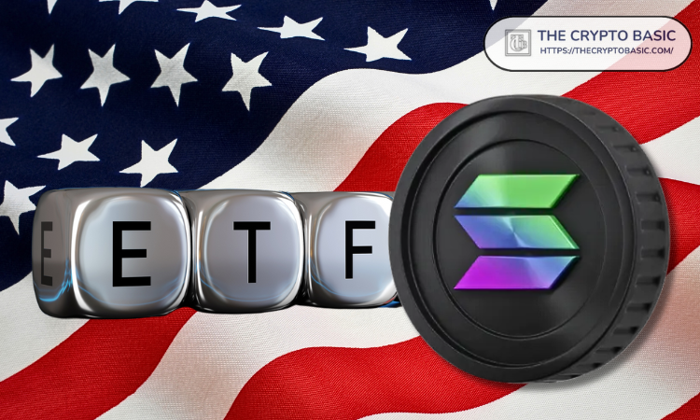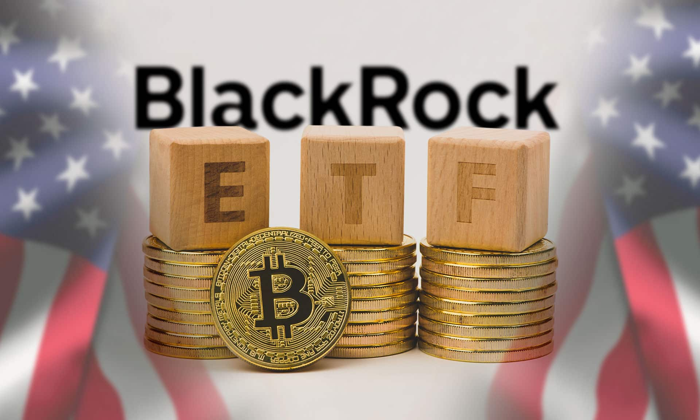Stripe stablecoin accounts mark a significant innovation in the world of digital finance, expanding the possibilities for stablecoin payments across the globe. With the rising popularity of US dollar stablecoins, Stripe is rolling out accounts that allow users to seamlessly send, receive, and hold digital currencies akin to traditional banking solutions. This rollout, which spans over 100 countries, comes at a time when crypto adoption is becoming crucial for individuals in regions grappling with financial instability. As users embrace these stable accounts, they can leverage the benefits of a robust financial infrastructure while banking the unbanked. As Stripe integrates this technology, it not only enhances user experience but also paves the way for more widespread use of stablecoins in everyday transactions.
Introducing accounts powered by stablecoin technology, Stripe is revolutionizing payment methods in over 100 nations. These accounts enable clients to transact with US dollar-pegged digital currencies, akin to having a standard bank account. As demand for blockchain-based financial solutions surges, these stable accounts serve as a lifeline for underserved markets, facilitating easy access to stable value in regions often plagued by economic challenges. The emergence of these crypto solutions is a testament to the growing role of digital currencies in enhancing financial inclusion and driving global commerce. Businesses and consumers alike stand to benefit from this advancement, as it harmonizes the worlds of traditional finance and innovative cryptocurrency solutions.
Understanding Stripe’s Stablecoin Accounts
Stripe’s recent launch of stablecoin accounts marks a significant evolution in payment solutions for global businesses. By introducing a feature that allows clients to send, receive, and hold US dollar stablecoins, Stripe is positioning itself at the forefront of the digital currency revolution. This new offering replicates the functionalities of traditional bank accounts but with the advantages of blockchain technology, including faster transactions and lower fees.
The introduction of stablecoin accounts is particularly timely as stablecoins have witnessed a massive uptick in adoption, with the total market cap exceeding $231 billion as of May 2025. This surge in interest is partly driven by the demand for stable alternatives in regions facing economic instability, such as high inflation and strict currency controls. By providing access to US-dollar stablecoins, Stripe is enabling businesses in over 100 countries to leverage the benefits of crypto while maintaining the stability they need during volatile market conditions.
Impact of Stablecoin Payments on Financial Infrastructure
Stablecoin payments are reshaping global financial infrastructure, particularly in countries with limited access to traditional banking systems. By allowing users to transact in digital currencies backed by stable assets like the US dollar, Stripe is helping to bridge the gap between fiat and cryptocurrency. This is critically important for developing economies where inflation erodes the value of local currencies, making stablecoins a desirable alternative.
Moreover, the potential to bank the unbanked is a powerful narrative associated with the rise of stablecoin adoption. In many developing regions, individuals lack access to basic banking services, yet they can easily access a mobile phone and the internet. Stablecoins offer these individuals a chance to transact securely and efficiently. Stripe’s stablecoin accounts harness this potential, demonstrating how modern technology can transform financial inclusion and empower individuals and businesses alike in an increasingly digital economy.
The Role of US Dollar Stablecoins in Global Trade
The rise of US dollar stablecoins is significantly impacting global trade dynamics, providing a reliable medium of exchange for businesses engaged in cross-border commerce. With Stripe’s integration of stablecoins into its payment ecosystem, companies can now conduct transactions more efficiently, sidestepping the inefficiencies of traditional banking systems. This capability is particularly valuable for small to medium enterprises operating in regions with underdeveloped financial infrastructure.
Incorporating US dollar stablecoin payments allows businesses to minimize the risks associated with foreign exchange fluctuations. As these digital assets maintain their value pegged to the US dollar, companies can execute transactions with a higher degree of financial predictability. By utilizing Stripe’s stablecoin services, businesses are better equipped to navigate the complexities of international marketplaces, fostering smoother trade operations and potentially enhancing global economic growth.
Stablecoin Adoption in Developing Economies
Stablecoins are increasingly being adopted in developing economies, particularly in regions that face significant economic challenges. Stripe’s entry into these markets with stablecoin accounts offers a new avenue for financial transactions, thereby promoting economic stability and growth. Countries like Argentina, Turkey, and Colombia are witnessing a surge in the utilization of stablecoins as a safeguard against hyperinflation and currency volatility, showcasing the adaptability of digital currencies in times of financial distress.
The growing acceptance of stablecoin payments not only facilitates commerce but also helps in banking the unbanked. Many individuals without access to traditional banking services are turning to digital wallets that support stablecoins. This shift is crucial as it allows people to store value and engage in economic activities that were previously inaccessible. By leveraging Stripe’s solutions, these users can participate in the global economy, improving their financial conditions and contributing to local economic development.
The Future of Stablecoins and Digital Payments
Looking ahead, the future of stablecoins appears bright, particularly as companies like Stripe continue to innovate and expand their offerings in the digital payments space. As regulatory frameworks evolve to accommodate cryptocurrencies, we can expect further integration of stablecoins into the global financial ecosystem. This will likely enhance consumer trust and broaden the market for digital payments, paving the way for increased crypto adoption across various sectors.
Furthermore, with ongoing advancements in blockchain technology, we anticipate improvements in transaction efficiency, security, and compliance. Stripe’s proactive approach in adopting stablecoin accounts puts them at the forefront of these changes, enabling businesses to leverage the benefits of digital currencies while navigating challenges related to regulation and market volatility. Ultimately, stablecoins have the potential to redefine how we view money, transactions, and economic participation.
Benefits of Using Stripe for Stablecoin Transactions
Utilizing Stripe for stablecoin transactions offers numerous advantages for businesses looking to enhance their payment solutions. Firstly, Stripe provides a user-friendly interface and seamless integration capabilities that simplify the management of cryptocurrency alongside traditional fiat. This means businesses can handle different currencies more efficiently, streamlining their operations and enhancing customer experiences.
Additionally, Stripe’s extensive global reach enables businesses to tap into international markets without the complexities typically associated with cross-border transactions. With stablecoins, companies can easily convert payments into their local currency, mitigating the risks of currency fluctuations and ensuring that revenue remains stable. This flexibility is crucial for businesses operating in diverse economic environments.
Strategies for Maximizing Stablecoin Utility
To fully benefit from Stripe’s stablecoin accounts, businesses should adopt strategies that maximize the utility of these digital currencies. For instance, businesses can offer customers the option to pay in stablecoins, which can attract more clients who prefer using digital assets. By promoting the use of stablecoin payments, companies can potentially lower transaction costs and increase customer satisfaction, as these payments often come with lower fees compared to traditional payment methods.
Furthermore, businesses can leverage stablecoins for faster cross-border transactions. By integrating Stripe’s stablecoin solutions, companies can instantaneously settle payments with partners around the world, eliminating the delays associated with traditional international banking. This capability can significantly improve cash flow, enabling companies to allocate resources more efficiently and respond rapidly to market opportunities.
Challenges Facing Stablecoin Integration
While the adoption of stablecoins presents numerous opportunities, there are also challenges that businesses must navigate in integrating these new financial tools. Regulatory uncertainties surrounding cryptocurrency can pose significant risks, as governments and financial institutions grapple with how to classify and regulate digital currencies. Companies utilizing Stripe’s stablecoin accounts must stay informed about local regulations to ensure compliance and avoid potential legal issues.
Moreover, understanding the technology underpinning stablecoins is critical for businesses to successfully implement them into their financial systems. There may be a learning curve for teams unfamiliar with blockchain technology, requiring investment in training and education. However, by addressing these challenges proactively, businesses can position themselves to leverage the full potential of stablecoins and benefit from the future of digital finance.
The Importance of Education in Stablecoin Adoption
Education plays a vital role in the successful adoption of stablecoins, particularly among businesses unfamiliar with cryptocurrency. As industries shift towards digital financial solutions, providing stakeholders with knowledge about how stablecoins function can demystify their use and promote broader acceptance. Stripe can support this education process by offering resources and workshops to help businesses understand the benefits and practical applications of stablecoin accounts.
Moreover, further education on responsible cryptocurrency use is necessary to mitigate risks associated with volatility and regulatory concerns. By educating clients on best practices and potential pitfalls, Stripe can foster a safer payment environment and empower businesses to make informed decisions regarding their financial strategies. This commitment to education will enhance trust in stablecoins and facilitate smoother transitions to digital financial ecosystems.
Exploring Cross-Border Opportunities with Stablecoins
Stablecoins present significant opportunities for cross-border transactions, making them an ideal solution for businesses looking to expand their reach internationally. Stripe’s stablecoin accounts enable merchants to conduct transactions across various markets seamlessly. This is invaluable for international trade where exchange rate fluctuations can impact profit margins and complicate pricing strategies.
By utilizing stablecoins, companies can also tap into emerging markets with less stable currencies. This can help businesses mitigate risks typically associated with volatile local currencies, making it easier to engage in commerce with regions facing economic uncertainty. With Stripe facilitating these transactions, businesses are better equipped to participate in global markets and increase their competitiveness.
Frequently Asked Questions
What are Stripe stablecoin accounts and how do they function?
Stripe stablecoin accounts allow users to send, receive, and hold US-dollar stablecoin balances, similar to traditional bank accounts. This feature supports stablecoins like USDC and USDB and is designed to enhance crypto adoption and financial infrastructure in over 100 countries.
How does using a US dollar stablecoin account improve financial access?
US dollar stablecoin accounts from Stripe enable individuals in developing regions to engage in digital finance without the need for traditional banking. This method helps bank the unbanked by providing a stable store of value amidst economic challenges such as inflation and capital controls.
Why are stablecoin payments becoming popular in international markets?
Stablecoin payments are gaining popularity due to their ability to provide a reliable medium of exchange and store of value, particularly in countries facing high inflation and limited banking infrastructure. Stripe’s rollout supports this trend by offering accessible financial tools in over 100 countries.
Which stablecoins are supported by Stripe’s new account feature?
Stripe’s stablecoin accounts support Circle’s USDC and Bridge’s USDB, allowing users to transact in digital currencies that are pegged to the US dollar, enhancing crypto adoption for many businesses and individuals globally.
How does Stripe’s integration of stablecoin payments impact online transactions?
By integrating stablecoin payments, Stripe facilitates seamless online transactions for merchants in 70 countries, allowing customers to pay in a stable currency. This innovation enhances the appeal and accessibility of digital commerce, particularly in regions where traditional financial systems are lacking.
What kind of users benefit from Stripe stablecoin accounts?
Stripe stablecoin accounts benefit a diverse range of users, especially those in developing countries where financial infrastructure is limited. These accounts provide a means to conduct transactions, save value, and engage with the digital economy, effectively banking the unbanked.
How does Stripe’s stablecoin account feature support financial infrastructure development?
By offering stablecoin accounts that operate similarly to fiat banking, Stripe supports the growth of financial infrastructure by providing tools for secure transactions and savings in economies where traditional banking may not be fully established.
What is the significance of the growing stablecoin market cap?
The increasing stablecoin market cap, which exceeded $231 billion, reflects a rising demand for stable digital currencies as they become essential in facilitating crypto adoption and financial services in both developed and developing economies.
Can users easily access and manage their Stripe stablecoin accounts?
Yes, users can easily access and manage their Stripe stablecoin accounts through a digital interface that simplifies the process of sending, receiving, and holding stablecoins, making it user-friendly and efficient.
What impact do Stripe’s stablecoin accounts have on global financial inclusion?
Stripe’s stablecoin accounts play a crucial role in promoting global financial inclusion by offering access to digital banking services for unbanked populations, thus enabling them to store and transfer value in a stable currency.
| Key Point | Details |
|---|---|
| Launch of Stablecoin Accounts | Stripe has rolled out stablecoin accounts to clients in over 100 countries. |
| Market Demand | Stablecoin market capitalization exceeded $231 billion by May 2025, reflecting rising demand. |
| Technical Details | Accounts support Circle’s USDC and Bridge’s USDB stablecoins. |
| Target Markets | Service is offered in countries like Argentina, Chile, Turkey, Colombia, and Peru. |
| Use Case | Stablecoins are becoming important in developing economies to combat inflation and provide secure value storage. |
| Impact on Banking the Unbanked | Blockchain and stablecoins facilitate banking for those without traditional access, enabling easier cross-border transactions. |
| Integration of Payments | Stripe integrated USD stablecoin payments in 2024, meeting high demand across 70 countries. |
| Growing Use in Latin America | Latin American residents increasingly adopt stablecoins for value storage and online transactions. |
Summary
Stripe stablecoin accounts have been introduced to provide clients with innovative financial solutions across over 100 countries. The introduction of stablecoin accounts is indicative of the growing demand for cryptocurrency solutions, particularly in regions experiencing high inflation and inadequate banking infrastructure. By utilizing stablecoins, Stripe not only facilitates secure transactions but also aids in banking the unbanked, offering a reliable store of value and payment medium in challenging economic conditions.
Stripe stablecoin accounts are revolutionizing the way users engage with digital currency, making it easier than ever to participate in the booming world of stablecoin payments. With the recent rollout of Stripe’s accounts, clients in over 100 countries can now send, receive, and hold US dollar stablecoin balances, mimicking the functionalities of traditional banking systems. This innovation stands out against the backdrop of a rapidly expanding market, where stablecoin demand has soared, with market capitalization exceeding $231 billion as of May 2025. By adopting reputable stablecoins like USDC and USDB, Stripe is enhancing financial infrastructure and enabling crypto adoption in regions often overlooked by conventional banking services. Consequently, these stablecoin accounts offer an inclusive solution for banking the unbanked, facilitating access to stable financial resources across diverse economies.
Stripe’s recent introduction of digital currency accounts is setting a new standard in how individuals and businesses transact online. By leveraging programmable money that retains parity with traditional fiat, these digital accounts allow users to manage their funds in a more innovative and efficient manner. The offering aligns with the growing interest in US dollar-backed stablecoins, which serve as a reliable medium for exchange and a safeguard against inflationary pressures. As financial ecosystems continue to evolve, this initiative is pivotal for fostering financial inclusion and empowering underbanked populations globally. With Stripe at the forefront, embracing stablecoin technology signifies a significant step towards broader crypto integration in everyday financial activities.














